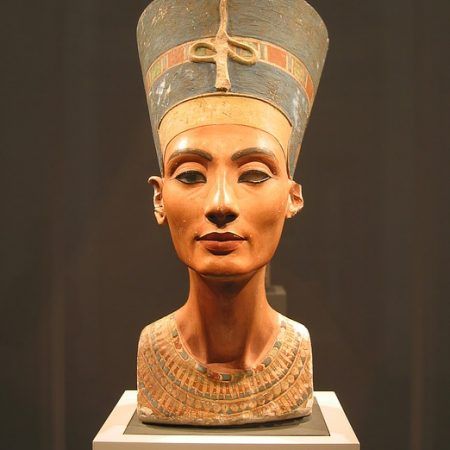[bctt tweet="The Late Bronze Age collapse was the rapid and violent end of (African) civilizations in the greater Mediterranean area in a fifty-year span between 1200 and 1150 BC." username="QaziniKenya"]
In my first article about Africa History, I mentioned the fact that African history seems to have a common divergence point. This was just a hunch. In the many months since then, I have scoured the internet for clues.
My hunt has taken me all over the world, to a time approximately 5,000 years ago, and back again. The story that is emerging from this journey is more intriguing than intrigue itself.
The Late Bronze Age collapse
The Late Bronze Age collapse was the rapid and violent end of (African) civilizations in the greater Mediterranean area in a fifty-year span between 1200 and 1150 BC. In some instances, entire civilizations were abandoned entirely. A combination of natural and human factors was directly responsible for the fall.
With a setting in the Near East, North Africa, and Southern Europe, the collapse greatly affected the future African peoples. In fact, the immediate aftermath of the Late Bronze Age collapse was the dark ages of Africa and Greece. The Late Bronze Age collapse is the big fall of ancient Africa.
The Sahara Desert
The Sahara desert has been a major geographical feature of North Africa for millennia. The only thing that seems to have changed much is the level of humidity found in this desert.
According to recent studies, the Sahara desert as we know it today was born 4,000 years ago. This was the tail end of the African Humid Period (AHP), a time when conditions in the Sahara were ideal for pastoralism and agriculture, and a large native population called the vast plains home.
At the end of the AHP, the Sahara suddenly heated up, sending that native population on a hunt for better lands elsewhere.
And there, right there, was where it all started going to hell. At about 2000 BC, Egypt was at the peak of her power and influence. A power and influence that had been accumulated over millennia, but with the neighboring Sahara a more friendly area.
In fact, Saharan populaces might even have been assimilated into the Empire at various points between the 11th and 2oth Dynasties, as evidenced by the Saqqara discoveries. They indicate the same similarities in burial customs with Egypt as do the Nubian pyramids, evidence of cultural similarities for a people living in the same geopolitical area.
Attack of the Sea Peoples
In Egypt, the Late Bronze Age collapse was an attack of the sea peoples, who sought to occupy Egyptian lands. In the hieroglyph representations, they are shown carrying possessions. Could the sea beings referred to be the sea of sand? Those fleeing the drought of the Saharan sea of sand could easily have joined the massive coalition of tribes from the north to attack the land of Egypt.
The true extent of disruption from the expanding Sahara has never been studied. But it was probably a very profound one, felt on every part of the occupied world. As we continue unlocking the spectrum of development in our world, the Sahara plays a central role.
A nation in distress
In old Egyptian records, there are quite a few choice literary productions written in the ‘nation in distress’ style. Considering that the palace controlled writing almost 100%, this tells us a lot about Egypt in those last few centuries before the Late Bronze Age collapse.
Pharaoh Akhenaten and the Monotheism Experiment
Largely written off of Egyptian history is the ‘heretic king’ Amenhotep IV (Akhenaten). A pharaoh of Egypt from 1353 – 1336 BC, Amenhotep IV is credited with enforcing far-reaching religious reforms. Changing his name to Akhenaten in his fifth year, Amenhotep IV went on to even build a whole new city for the new worship of Aten, the sun god.
Of course, polytheistic Egyptian priests and priestesses went berserk. Akhenaten may be the only Egyptian Pharaoh who may have been disposed of by a mass uprising. With the advantage of 3,000 years, we can clearly see that that particular adventure was more like the beginning of the end.
A weakened Egypt was not able to weather continued attacks from the East for much longer. When the 18th Dynasty ended, the kingdom was lost to invaders with increasing frequency. The last conquest by the Roman Kingdom put an end to old Egypt for good.
Re-emergence in East Africa
After all this time, the cult of Akhenaton may be resurfacing thousands of miles away. I recently came across an article by Emmanuel Muriuki, a Museums of Kenya curator, which gives a very interesting origin story of the Agikuyu. In this theory, Akhenaten abdicated the throne and led his people south. They settled in the Mount Kenya region and became the Agikuyu. Akhenaten is the otherwise named Gikuyu, father of the Kikuyu tribe.
The association of East African Bantus with the north has always mystified scholars. The names that are mentioned cannot be found on the map (of course) which creates some serious issues. Even brings to mind the idea that we might be hiding something.
However, the Late Bronze Age collapse explains the traumatized northern origins of Bantus. Probably from the kingdoms that thrived before the end of the African Humid Period. Traumatized because the end was not just brought by natural calamity alone (expansion of the desert) but also escape from the vicious attacks of a vast coalition of pillaging foreigners.
In the north, life, as it had been enjoyed for millennia, was literally coming to an end. Fragments of evidence, however, still remain:
The Ameru trace their origin back to Mbwaa (old Egyptian name associated with the Ibis).
The Kisii and Luhya are transparent about their origins in Misri.
Sirikwa, a mysterious origin point of highland Bantus is rooted in the name “Osiris”, another Egyptian deity.
The Bantu Expansion
The Bantu expansion is one of the most understudied concepts in African history. Without the fields of data left behind by ancient Egyptians, there has been little interest in the topic, even here at home.
But for the plucky historian, the fashion in which millions of people spread throughout the continent from about 3,000 years ago remains a mystery. The only thing we can be sure about is that the Late Bronze Age collapse proceeded the start of the Bantu expansion. The question we now need to answer; was the Late Bronze Age collapse the trigger for the Bantu expansion?





